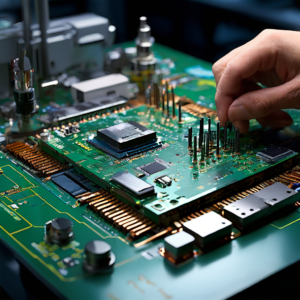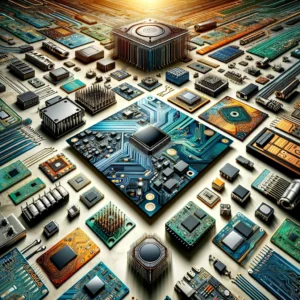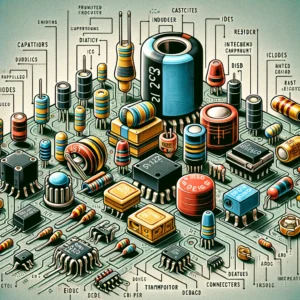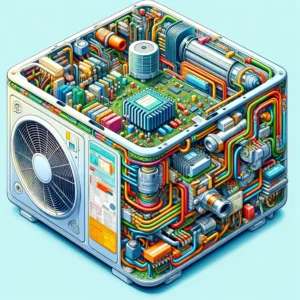PCB Glue: An Ultimate Guide in 2024
In the world of electronics manufacturing, Printed Circuit Board (PCB) assembly plays a pivotal role in ensuring the durability and functionality of electronic devices. As technology continues to evolve, the materials and methods used in PCB assembly also advance. One such critical component in the assembly process is PCB glue, also known as PCB adhesive.
This comprehensive guide provides an in-depth look into PCB glue, its types, applications, and best practices for 2024, catering to both novices and seasoned professionals in the electronics manufacturing industry.
What is PCB Glue?

PCB glue, or adhesive, is a substance used to bond components to a printed circuit board. The use of glue in PCB assembly is crucial for ensuring that components remain securely attached to the board, especially in devices that are subject to movement, vibrations, or thermal cycling.
Beyond merely securing components, PCB glue also provides mechanical support and contributes to the overall reliability of the electronic device.
Types of PCB Glue
There are several types of PCB glues available in the market, each designed to meet specific requirements of the assembly process and the final product. The most commonly used types include:
- Epoxy Adhesives: Known for their strong bond and high temperature resistance, epoxy adhesives are widely used in applications requiring durability and longevity.
- Acrylic Adhesives: Offering a balance between flexibility and strength, acrylic adhesives are used in applications where thermal and mechanical shock resistance is essential.
- Silicone Adhesives: With excellent thermal stability and flexibility, silicone adhesives are ideal for applications exposed to extreme temperatures.
- UV Curing Adhesives: These adhesives cure quickly under UV light, making them suitable for high-speed assembly lines where rapid curing is a priority.
Applications of PCB Glue
PCB glue finds its application across a wide range of electronic devices, from consumer electronics like smartphones and laptops to industrial and automotive electronics. The primary applications include:
- Surface Mount Technology (SMT) Assembly: PCB glue is used to hold components in place before soldering, especially in SMT assembly where components are mounted directly onto the surface of the board.
- Through-Hole Technology (THT) Assembly: In THT assembly, PCB glue provides additional support to components that are inserted into drilled holes on the board.
- Underfill and Encapsulation: PCB glue is also used for underfill applications to fill the gap between the PCB and the component, as well as encapsulation to protect components from environmental factors.
Best Practices for Using PCB Glue
To ensure the effectiveness and reliability of PCB glue in the assembly process, it is crucial to follow best practices:
- Proper Selection: Choose the right type of PCB glue based on the application requirements, such as temperature resistance, flexibility, and curing time.
- Surface Preparation: Clean and prepare the surfaces to be bonded to ensure strong adhesion. This may involve removing dust, grease, or other contaminants.
- Precise Application: Use appropriate tools and techniques for applying the adhesive to avoid excess glue which can lead to component misalignment or malfunction.
- Curing Process: Adhere to the recommended curing process for the selected adhesive, whether it requires heat, UV light, or time to set properly.
Future Trends in PCB Glue
As electronics continue to evolve, the role of PCB glue also advances. Innovations in adhesive technology focus on enhancing the performance and environmental sustainability of PCB assembly.
Trends to watch in 2024 and beyond include the development of more eco-friendly adhesives, improved thermal management capabilities, and the integration of smart adhesives that can provide diagnostic information about the health and performance of the electronic assembly.
Conclusion
PCB glue is an indispensable component in the electronics manufacturing process, offering a range of solutions for securing components and enhancing the durability and reliability of electronic devices.
With the right selection and application practices, PCB glue can significantly contribute to the performance and longevity of electronic products. As technology progresses, staying informed about the latest developments in PCB adhesive technology will be crucial for manufacturers and engineers alike, ensuring that their products continue to meet the evolving demands of the market.
Share:
More Posts

Trends and Challenges in PCB Manufacturing for 2024
Trends and Challenges in PCB Manufacturing for 2024 As we move into 2024, the printed circuit board (PCB) manufacturing industry continues to evolve rapidly, driven

10 Best PCB Manufacturers in India
10 Best PCB Manufacturers in India The electronics manufacturing landscape in India has seen a significant transformation in recent years, with Printed Circuit Board (PCB)

Identifying PCB Components: A Step-by-Step Guide
Identifying PCB Components: A Step-by-Step Guide Printed Circuit Boards (PCBs) are the backbone of modern electronic devices, from simple gadgets to complex machinery. Knowing how

What is PCB in AC?
What is PCB in AC? Air conditioning has become an essential part of our daily lives, providing comfort and a conducive living environment regardless of

